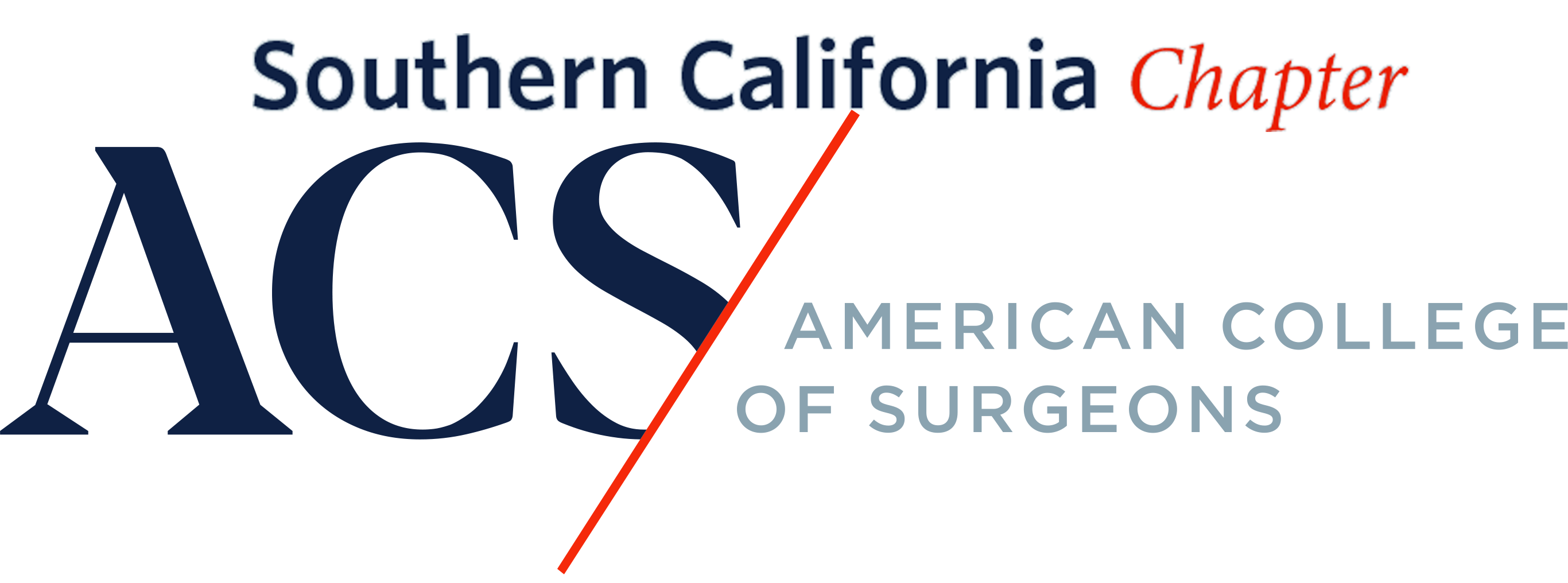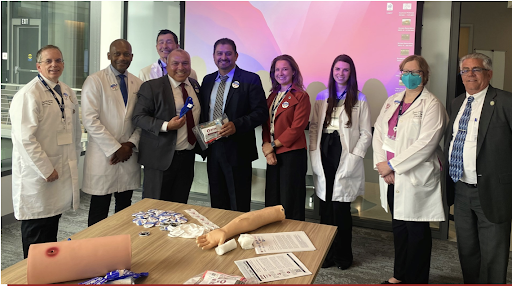STOP THE BLEED
STOP THE BLEED® is an interactive course formed as the result of a collaborative effort led by the American College of Surgeons. Participants are taught to recognize life-threatening bleeding and act quickly and effectively to control it using three methods of bleeding control – direct pressure, wound packing, and application of a tourniquet. The course has trained over 2.6 million students, teachers, and community groups in learning how to STOP THE BLEED and save a life.
Steps:
California Passes STOP THE BLEED Bill
The American College of Surgeons applauds the California State Legislature and Governor Gavin Newsom for enacting Assembly Bill 2260, “Emergency Response: Trauma Kits.” The American College of Surgeons STOP THE BLEED® program has prepared over 2.4 million people worldwide on how to stop bleeding in a severely injured person.
Follow us on Twitter @STBSoCal
ACS National STB Site: https://www.stopthebleed.org
Photos from SoCal Stop the Bleed Events
Advanced Trauma Life Support
ADVANCED TRAUMA LIFE SUPPORT® (ATLS®) is a course which teaches surgeons, emergency medicine physicians, and other providers a systematic approach to the assessment and immediate management of injured patients. First introduced in 1980 by the American College of Surgeons Committee on Trauma, ATLS is a safe and reliable course which describes the priorities to resuscitate and stabilize the severely injured trauma patient. The course has now been taught to more than 1 million doctors in more than 80 countries worldwide.
Basic Endovascular Skills for Trauma
BASIC ENDOVASCULAR SKILLS FOR TRAUMA® (BEST®) is a course sponsored by the American College of Surgeons which trains participants to perform endovascular techniques such as resuscitative endovascular balloon occlusion of the aorta (REBOA) to temporize life-threatening hemorrhage. The BEST course offers hands-on training with perfused cadavers including ultrasound-guided common femoral arterial (CFA) access, percutaneous and open cannulation of the CFA, and CFA repair.





















